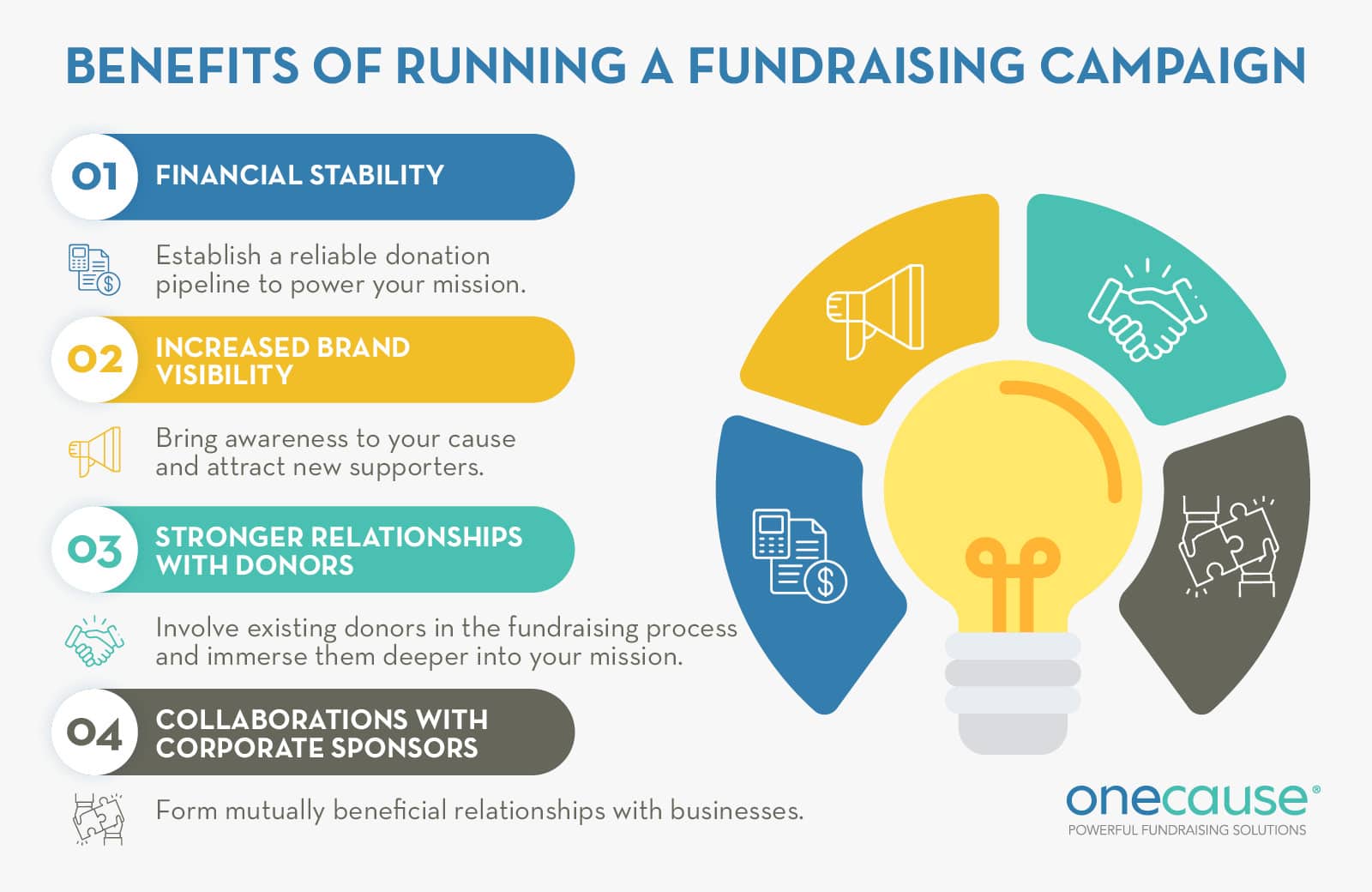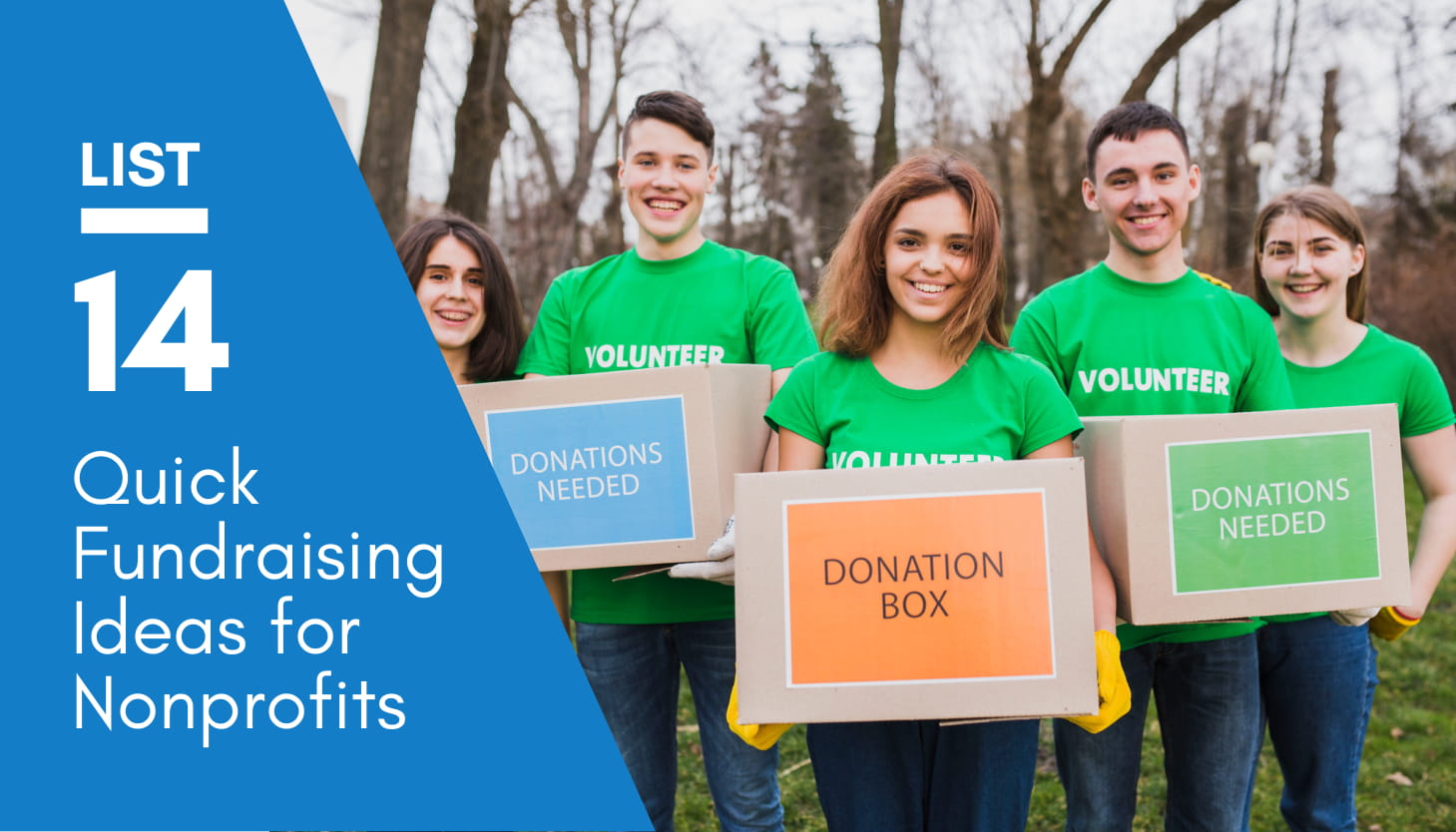Innovative Nonprofit Fundraising Ideas: Increase Donations and Involvement
Innovative Nonprofit Fundraising Ideas: Increase Donations and Involvement
Blog Article
The Role of Area Engagement in Nonprofit Fundraising: Structure Lasting Relationships for Sustainable Assistance
Area interaction is significantly acknowledged as an important element of successful not-for-profit fundraising. By promoting real relationships with regional stakeholders, organizations can cultivate depend on and loyalty, which are important for sustainable assistance. Nonetheless, the methods and strategies employed to involve areas vary commonly, raising essential concerns regarding performance and influence. What are the best methods for cultivating these vital connections, and exactly how can nonprofits gauge their success in this sector? Comprehending these dynamics could substantially affect the future of fundraising initiatives and the total goal of not-for-profit organizations.
Recognizing Area Interaction
Neighborhood involvement is a crucial part of effective nonprofit fundraising efforts. Nonprofits need to determine essential stakeholders-- such as neighborhood participants, regional companies, and other companies-- to create effective engagement methods.
Effective neighborhood engagement is predicated on energetic listening and responsiveness to the needs and interests of the area. This process entails obtaining feedback, understanding neighborhood characteristics, and guaranteeing that the organization's goal lines up with local concerns. Engaging the community can take different forms, consisting of public conferences, volunteer chances, and collaboration efforts, each developed to encourage involvement and financial investment in the company's objectives.
Additionally, community engagement ought to be come close to as a continuous dialogue as opposed to an one-time effort. By cultivating a comprehensive setting where community voices are listened to and valued, nonprofits can develop a strong structure for future fundraising undertakings. Eventually, a deep understanding of neighborhood interaction empowers companies to create authentic connections that boost their overall efficiency and sustainability.
Advantages of Solid Relationships
Solid partnerships developed via community engagement yield countless advantages for not-for-profit fundraising initiatives. First and leading, these connections foster depend on and reliability, necessary components in encouraging benefactors to add. When prospective fans see a not-for-profit proactively entailed in their neighborhood, they are much more most likely to rely on its mission and effect.
/tastea-2019/images/fundraiseelements1-03-cb88c.png)
In addition, these connections help with effective communication. Nonprofits can leverage their links to share stories of impact, updates, and requires, making sure that fans stay informed and engaged. This open line of interaction not only strengthens bonds but additionally urges word-of-mouth promotion, broadening the nonprofit's reach.
Last but not least, solid neighborhood ties can draw in new companions and sponsors. Individuals and businesses are extra inclined to straighten with companies that demonstrate meaningful community participation, providing additional sources and assistance that can considerably enhance fundraising capacities. Hence, cultivating robust partnerships via community engagement is essential to a not-for-profit's long-term fundraising success.
Strategies for Efficient Engagement
Just how can nonprofits successfully engage their neighborhoods to boost fundraising initiatives? Regular updates, engaging material, and calls-to-action can galvanize community rate of interest and engagement.
2nd, hosting Recommended Site area occasions, such as workshops, volunteer chances, or fundraising drives, facilitates face-to-face communication, enabling nonprofits to showcase their effect and efforts. These events not only raise funds yet also grow partnerships and allow area members to involve straight with the cause.
Third, applying personalized communication strategies can improve involvement. Tailoring messages to particular contributor segments based on passions and previous payments cultivates a sense of belonging and financial investment in the company's objective.
Last but not least, creating partnerships with neighborhood organizations and community leaders can intensify outreach initiatives. Collaborative efforts can improve exposure and trustworthiness, demonstrating a collective dedication to the neighborhood's health. By incorporating these techniques, nonprofits can develop lasting partnerships that enhance fundraising initiatives and drive lasting assistance.
Measuring Involvement Success
While engaging the neighborhood is essential for successful not-for-profit fundraising, determining the performance of these engagement efforts is just as crucial. Developing clear metrics permits companies to analyze just how well they are getting in touch with their audience and accomplishing their fundraising objectives. Secret performance indications (KPIs) such as contributor retention rates, volunteer involvement levels, and interaction on social networks systems offer substantial data for examination.

Frequently examining these metrics enables organizations to pivot their strategies when necessary, guaranteeing that community engagement continues to be straightened with their total goal. Additionally, sharing these results with stakeholders promotes openness and develops trust fund, urging more neighborhood participation. Eventually, a durable dimension framework not just educates future fundraising initiatives however likewise enhances the partnership between the not-for-profit and its advocates, preparing for sustainable success.
Situation Research Studies in Neighborhood Impact
Various study show the profound influence that neighborhood involvement can have on nonprofit fundraising success. One notable example is the "Food for Thought" campaign, where a regional food bank partnered with services and colleges to host community dinners. These events not just elevated funds yet also promoted a sense of belonging amongst individuals, considerably boosting benefactor retention prices.
Another compelling situation is the "Eco-friendly Spaces Task," which entailed local residents in the revitalization of metropolitan parks. This effort not only gathered monetary assistance from neighborhood businesses but likewise cultivated a volunteer base that added to ongoing maintenance and programming. The sense of ownership and pride among neighborhood participants equated right into sustained contributions.
In the realm of arts, the "Art for All" campaign effectively engaged regional artists and customers to develop joint art installments, causing increased exposure and contributions for a neighborhood arts nonprofit.
These instances highlight that when nonprofits prioritize area involvement, they can create long-term connections that enhance fundraising initiatives, making sure lasting assistance and cultivating a vibrant community culture. Such cases show that community interaction is not simply an approach but an important pillar of not-for-profit success.
Verdict
In final thought, area involvement is indispensable to the success of not-for-profit fundraising initiatives. By promoting solid connections with neighborhood stakeholders, companies enhance depend on and trustworthiness, resulting in improved benefactor retention and loyalty. Executing effective interaction methods and measuring their impact makes sure that nonprofits can grow and adapt. Inevitably, more tips here a durable structure of neighborhood assistance not only enhances fundraising possible yet additionally grows a culture of partnership, essential for accomplishing long-term organizational goals and sustaining significant influence.
Nonprofits should determine key stakeholders-- such as neighborhood participants, neighborhood companies, and other companies-- to create efficient interaction strategies.

In verdict, neighborhood engagement is essential to the success of nonprofit fundraising efforts.
Report this page